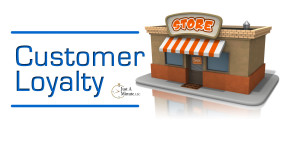 Are Daily Deal Sites Really So Bad for Small Business?
Are Daily Deal Sites Really So Bad for Small Business?
Like a comet blazing against the night sky, daily deal sites like Groupon and LivingSocial burst onto the scene promising great things for small business. You’d be able to grab new customers easily and quickly using these sites, and without a huge expenditure.
Unfortunately; not so much. This is largely due to several things: stratospheric expectations, poor press and the lack of clear strategy by businesses using this new tool.
All the media can seem to focus on is how much these companies, the two largest players in the space, are bleeding money. While both have suffered through massive growing pains, this was practically inevitable given the fanfare and splash they made coming onto the scene.
However, we’re not quite ready to throw the baby out with the bathwater! We believe that with the right strategy and realistic expectations, businesses can use daily deal sites to their advantage and gain a new audience, as well as energizing their core customers. Let’s look at some key points in achieving this outcome!
Determine if your business is right for the daily deal model
Not every business is a good candidate for a model like this one. Be sure and ask an expert for their opinion, and contact some of their references for their take on it. Try and gather a decent sampling of data before signing on the dotted line.
The goal is repeat customers, not one-time buyers
Many of the sales generated by daily deals are people seeking a one-time purchase based solely on the price offered. This can and often does result in a customer who has no intention of coming back to you anytime soon. It’s your job to wow them into becoming repeat customers.
Track your results
To best understand whether or not daily deal sites will work for you long-term, you really need to track your results carefully, from total expenditures to customer behavior, including repeat purchases. Analyzing this data will help you make an informed plan going forward.
Be sure to follow up with these new customers
To increase the odds of securing a long term customer, make sure you follow up their initial purchase with some sort of incentive to keep shopping with you. This can come in the form of other coupons, sales, repeat customer spiffs or another incentive.
Daily deal sites aren’t dead, and neither will your business be if you can find the formula to make them work for you. The potential is enormous!










